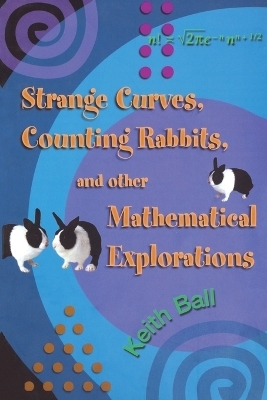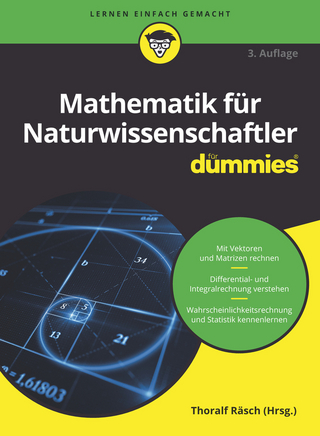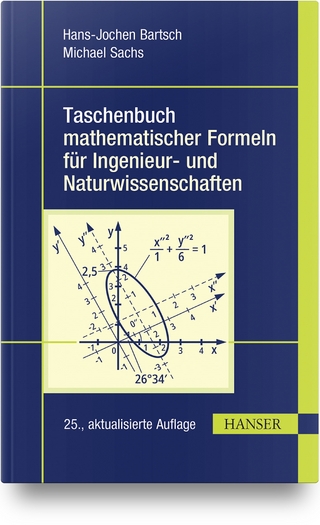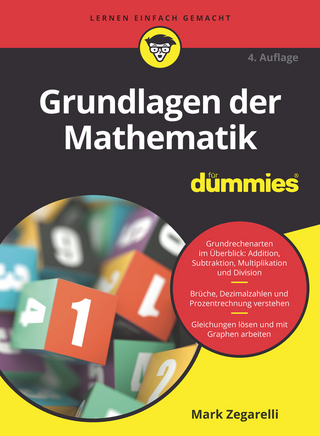
Strange Curves, Counting Rabbits, & Other Mathematical Explorations
Princeton University Press (Verlag)
978-0-691-12797-2 (ISBN)
How does mathematics enable us to send pictures from space back to Earth? Where does the bell-shaped curve come from? Why do you need only 23 people in a room for a 50/50 chance of two of them sharing the same birthday? In Strange Curves, Counting Rabbits, and Other Mathematical Explorations, Keith Ball highlights how ideas, mostly from pure math, can answer these questions and many more. Drawing on areas of mathematics from probability theory, number theory, and geometry, he explores a wide range of concepts, some more light-hearted, others central to the development of the field and used daily by mathematicians, physicists, and engineers. Each of the book's ten chapters begins by outlining key concepts and goes on to discuss, with the minimum of technical detail, the principles that underlie them. Each includes puzzles and problems of varying difficulty. While the chapters are self-contained, they also reveal the links between seemingly unrelated topics. For example, the problem of how to design codes for satellite communication gives rise to the same idea of uncertainty as the problem of screening blood samples for disease.
Accessible to anyone familiar with basic calculus, this book is a treasure trove of ideas that will entertain, amuse, and bemuse students, teachers, and math lovers of all ages.
Keith Ball is Professor of Mathematics at University College London and a Royal Society Leverhulme Research Fellow. Well known for his entertaining public lectures on mathematics, he is also the author of a graduate-level introduction to convex geometry in a textbook on geometry.
Preface xi Acknowledgements xiii Chapter One Shannon's Free Lunch 1 1.1 The ISBN Code 1 1.2 Binary Channels 5 1.3 The Hunt for Good Codes 7 1.4 Parity-Check Construction 11 1.5 Decoding a Hamming Code 13 1.6 The Free Lunch Made Precise 19 1.7 Further Reading 21 1.8 Solutions 22 Chapter Two Counting Dots 25 2.1 Introduction 25 2.2 Why Is Pick's Theorem True?27 2.3 An Interpretation 31 2.4 Pick's Theorem and Arithmetic 32 2.5 Further Reading 34 2.6 Solutions 35 Chapter Three Fermat's Little Theorem and Infinite Decimals 41 3.1 Introduction 41 3.2 The Prime Numbers 43 3.3 Decimal Expansions of Reciprocals of Primes 46 3.4 An Algebraic Description of the Period 48 3.5 The Period Is a Factor of p 150 3.6 Fermat's Little Theorem 55 3.7 Further Reading 56 3.8 Solutions 58 Chapter Four Strange Curves 63 4.1 Introduction 63 4.2 A Curve Constructed Using Tiles 65 4.3 Is the Curve Continuous? 70 4.4 Does the Curve Cover the Square? 71 4.5 Hilbert's Construction and Peano's Original 73 4.6 A Computer Program 75 4.7 A Gothic Frieze 76 4.8 Further Reading 79 4.9 Solutions 80 Chapter Five Shared Birthdays, Normal Bells 83 5.1 Introduction 83 5.2 What Chance of a Match? 84 5.3 How Many Matches? 89 5.4 How Many People Share? 91 5.5 The Bell-Shaped Curve 93 5.6 The Area under a Normal Curve 100 5.7 Further Reading 105 5.8 Solutions 106 Chapter Six Stirling Works 109 6.1 Introduction 109 6.2 A First Estimate for n 110 6.3 A Second Estimate for n 114 6.4 A Limiting Ratio 117 6.5 Stirling's Formula 122 6.6 Further Reading 124 6.7 Solutions 125 Chapter Seven Spare Change, Pools of Blood 127 7.1 Introduction 127 7.2 The Coin-Weighing Problem 128 7.3 Back to Blood 131 7.4 The Binary Protocol for a Rare Abnormality 134 7.5 A Refined Binary Protocol 139 7.6 An Eficiency Estimate Using Telephones 141 7.7 An Eficiency Estimate for Blood Pooling 144 7.8 A Precise Formula for the Binary Protocol 147 7.9 Further Reading 149 7.10 Solutions 151 Chapter Eight Fibonacci's Rabbits Revisited 153 8.1 Introduction 153 8.2 Fibonacci and the Golden Ratio 154 8.3 The Continued Fraction for the Golden Ratio 158 8.4 Best Approximations and the Fibonacci Hyperbola 161 8.5 Continued Fractions and Matrices 165 8.6 Skipping down the Fibonacci Numbers 169 8.7 The Prime Lucas Numbers 174 8.8 The Trace Problem 178 8.9 Further Reading 181 8.10 Solutions 182 Chapter Nine Chasing the Curve 189 9.1 Introduction 189 9.2 Approximation by Rational Functions 193 9.3 The Tangent 202 9.4 An Integral Formula 207 9.5 The Exponential 210 9.6 The Inverse Tangent 213 9.7 Further Reading 214 9.8 Solutions 215 Chapter Ten Rational and Irrational 219 10.1 Introduction 219 10.2 Fibonacci Revisited 220 10.3 The Square Root of d 223 10.4 The Box Principle 225 10.5 The Numbers e and p 230 10.6 The Irrationality of e 233 10.7 Euler's Argument 236 10.8 The Irrationality of p 238 10.9 Further Reading 242 10.10 Solutions 243 Index 247
| Erscheint lt. Verlag | 5.11.2006 |
|---|---|
| Zusatzinfo | 89 line illus. 7 tables. |
| Verlagsort | New Jersey |
| Sprache | englisch |
| Maße | 152 x 235 mm |
| Gewicht | 397 g |
| Themenwelt | Sachbuch/Ratgeber ► Natur / Technik |
| Mathematik / Informatik ► Mathematik ► Allgemeines / Lexika | |
| Mathematik / Informatik ► Mathematik ► Mathematische Spiele und Unterhaltung | |
| ISBN-10 | 0-691-12797-2 / 0691127972 |
| ISBN-13 | 978-0-691-12797-2 / 9780691127972 |
| Zustand | Neuware |
| Haben Sie eine Frage zum Produkt? |
aus dem Bereich


